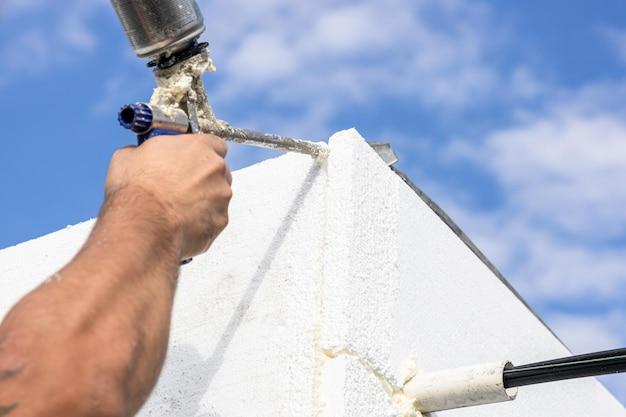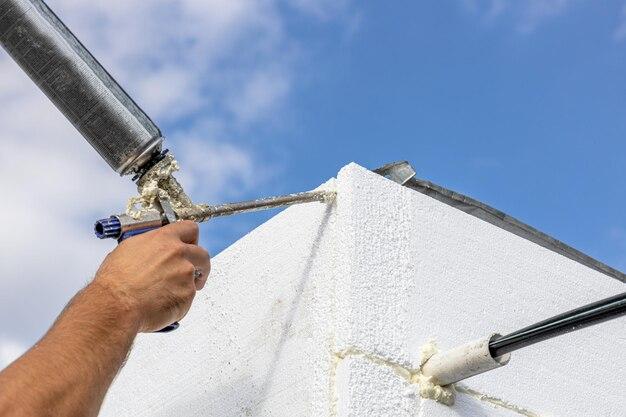Polyurethane foam is a material commonly found in mattresses, pillows, and furniture. It offers comfort and support, but many people wonder if it is safe to sleep on. In this blog post, we will explore the topic of sleeping on polyurethane foam and address some common concerns.
One question that often comes up is whether polyurethane foam is toxic, especially in pillows. People worry about the potential health risks of prolonged exposure to this material. Another concern is the unpleasant smell that sometimes accompanies foam mattress toppers. Is there any danger associated with these odors? Additionally, we’ll discuss the differences between memory foam and polyurethane foam and examine how long polyurethane foam typically lasts.
Join us as we delve into the topic of sleeping on polyurethane foam and separate facts from myths. We’ll explore the safety aspects and provide you with the information you need to make an informed decision about the type of foam you choose for your bedding. So, let’s get started!
Is It Safe To Sleep On Polyurethane Foam
Polyurethane foam has become a popular choice for mattresses due to its comfort and support. But here’s the burning question: is it safe to sleep on polyurethane foam? Let’s dig deeper and uncover the truth behind this squishy companion.
Polyurethane foam: the good, the bad, and the dreamy
Polyurethane foam is widely used in mattresses, thanks to its ability to conform to your body shape and alleviate pressure points. Its dreamy comfort can make you feel like you’re floating on a cloud, but there’s more to this foam than meets the eye.
Flame retardants – the flame-fighting superheroes
One concern with polyurethane foam is its flammability. Nobody wants a mattress that turns into a raging fireball in the night. To combat this, manufacturers add flame retardants to comply with safety regulations. These flame-fighting superheroes ensure that even if your candle knocks over, your bed won’t go up in flames faster than a pyromaniac’s bonfire.
The sneaky off-gassing conundrum
You might have heard whispers about off-gassing, and no, we’re not talking about the uncomfortable emissions coming from your significant other post-dinner. Off-gassing is the release of chemicals from polyurethane foam, and it’s as sneaky as a ninja. One of the main culprits is volatile organic compounds (VOCs). While fresh polyurethane foam might have a distinctive odor similar to a new car, fear not – the smell fades away within a few days, just like that person you met on vacation.
Toxin talk: separating fact from fiction
Now, let’s address the rumor mill spinning tales of toxins lurking in polyurethane foam. It’s time to put a comforting hug around your concerns. While it’s true that some chemicals are used in the production of polyurethane foam, major regulatory bodies have established safety standards to ensure that the levels of these chemicals are within safe limits. Rest easy knowing that you won’t be snoozing on a toxic waste dump.
Protecting the ozone layer: a foam’s environmental quest
Polyurethane foam isn’t just concerned with your comfort; it’s also doing its part to protect the ozone layer. Many manufacturers have transitioned from using ozone-depleting chemicals to more environmentally friendly alternatives. So, you can sleep soundly knowing that your mattress isn’t contributing to the depletion of the earth’s protective shield.
A mattress for everyone: regulations and certifications
To put your mind at ease, various regulations and certifications govern the production of polyurethane foam mattresses. From the strict limits on harmful chemicals imposed by organizations like CertiPUR-US to other regional certifications, the sleep industry has your back (and your spine) when it comes to safety and quality.
In conclusion, it’s safe to say that sleeping on polyurethane foam is no cause for panic. With flame retardants keeping your bed from turning into an inferno, minimal off-gassing that dissipates quickly, and industry regulations ensuring the absence of toxins, you can transform bedtime into a dreamy, worry-free experience. So go ahead, cozy up, and let the polyurethane foam cradle you into a peaceful slumber.
Now that we’ve settled the polyurethane foam debate, let’s tackle another question that plagues our dreams: Is using a weighted blanket like cuddling a hibernating bear? Stay tuned for the next thrilling edition of our blog!
FAQ: Is It Safe To Sleep On Polyurethane Foam
Polyurethane foam has become a popular choice in bedding materials, but concerns about its safety have also arisen. In this FAQ-style section, we address some common questions regarding the safety of sleeping on polyurethane foam pillows and mattresses.
Is Polyurethane Foam Toxic in Pillows
Polyurethane foam in pillows is generally considered safe. However, it’s important to note that some polyurethane foam may emit low levels of volatile organic compounds (VOCs) when new. To minimize this, look for pillows labeled as CertiPUR-US certified, which indicate low VOC emissions.
Is It Bad to Sleep on Foam
Sleeping on foam is generally safe for most people. However, some individuals may experience discomfort or allergic reactions to certain chemicals found in foam. If you have known allergies or sensitivities, it’s best to consult with a healthcare professional before choosing a foam mattress or pillow.
Why Do Mattress Toppers Smell
Mattress toppers may emit a noticeable odor when first unpacked. This is commonly referred to as “off-gassing” and is caused by the release of volatile compounds from the foam. The smell is usually temporary and dissipates over time. Ensuring proper ventilation in the room can help speed up the process.
Which Type of Foam Mattress is Best
The best type of foam mattress depends on personal preference and individual needs. Memory foam mattresses are known for providing pressure relief and contouring to the body. However, some people find them too warm. Latex foam mattresses offer good support, breathability, and hypoallergenic properties. Ultimately, it’s important to try different types of foam mattresses to determine the one that suits you best.
Why Memory Foam is Bad for Your Back
Contrary to the belief that memory foam is bad for your back, it can actually provide excellent support and alleviate pressure points. However, some individuals may find memory foam mattresses too soft or lacking in the necessary firmness for their specific back conditions. It’s always best to consult with a healthcare professional if you have back issues.
What are the Healthiest Pillows to Sleep On
The healthiest pillows to sleep on are typically made from organic and hypoallergenic materials. Look for pillows filled with natural materials like organic cotton, wool, or latex foam. These pillows are resistant to dust mites and other allergens, making them a healthier choice for those with allergies or asthma.
Is Memory Foam Smell Toxic
The smell associated with memory foam, commonly known as off-gassing, can be concerning. However, the odor is generally not toxic. It’s important to allow the mattress or pillow to air out in a well-ventilated room for a few days to help dissipate the smell.
How Much Does Foam Jacking Cost
Foam jacking, a method used to raise and level concrete, involves injecting polyurethane foam into voids beneath the surface. The cost of foam jacking can vary depending on factors such as the size and complexity of the project. It’s best to consult with a professional contractor to get an accurate cost estimate.
How Long Does Polyurethane Foam Last
The lifespan of polyurethane foam can vary depending on its quality and usage. On average, polyurethane foam in mattresses and pillows can last anywhere from 5 to 10 years with proper care. Regularly rotating and flipping mattresses can help extend their lifespan.
Why Do They Put Foam Under Concrete
Foam is often used as an insulation material under concrete slabs to prevent heat loss and reduce the risk of moisture damage. It also helps to minimize cracking and improve the overall stability of the concrete structure.
Is Polyurethane Safe in Bedding
Polyurethane foam used in bedding is generally considered safe. However, some individuals may have sensitivities or allergies to specific chemicals found in polyurethane foam. Opting for CertiPUR-US certified bedding products can help ensure they meet strict health and environmental standards.
What Happens If You Eat Polyurethane Foam
Consuming polyurethane foam is not recommended and can be harmful. If accidentally ingested in small amounts, it may pass through the digestive system without causing harm. However, consuming large quantities of polyurethane foam can lead to blockages in the digestive tract and may require medical attention.
Is Polyurethane Foam Safe
Polyurethane foam is considered safe for everyday use in bedding. However, it’s important to choose products that meet safety standards and look for certifications like CertiPUR-US, which ensures low emissions of harmful chemicals.
What is the Difference Between Memory Foam and Polyurethane
Memory foam is a type of polyurethane foam specifically designed to respond to body heat and pressure, conforming to the shape of the sleeper. While memory foam falls under the category of polyurethane foam, it has unique properties that make it ideal for pressure relief and comfort.
Is 100% Polyurethane Foam Toxic
100% polyurethane foam itself is not inherently toxic. However, some additives or fire retardants used in its production may emit low levels of VOCs. To ensure safety, look for polyurethane foam products that meet established safety standards and certifications.
Why is Polyurethane Foam Bad
Polyurethane foam is not inherently bad, but there are some concerns associated with it. These include potentially harmful chemicals used in its production, off-gassing when new, and its non-biodegradable nature. However, choosing foam products that meet safety standards can help mitigate these concerns.
Is Polyurethane Foam Good for Sofa
Polyurethane foam is commonly used in sofa cushions due to its ability to provide comfort and support. However, the quality of the foam can vary, leading to differences in durability and performance. Look for sofas that use high-density polyurethane foam for better longevity and comfort.
What are the Disadvantages of Memory Foam Mattress
While memory foam mattresses offer many benefits, there are a few disadvantages to consider. They can retain heat, making them less suitable for hot sleepers. Some people may find the initial smell and off-gassing unpleasant. Additionally, memory foam mattresses may have a firmer feel than traditional spring mattresses, which can take some getting used to.
Is Polyurethane Toxic for Babies
Polyurethane foam products, such as crib mattresses and pillows, can be safe for babies when they meet safety certifications and quality standards. Look for products labeled as hypoallergenic and free from harsh chemicals. It’s also essential to ensure proper ventilation and a safe sleep environment for infants.
What is the Healthiest Mattress
The healthiest mattress is subjective and depends on individual needs. However, mattresses made from organic materials such as organic cotton, wool, or natural latex are generally considered healthier options. These materials are often hypoallergenic, resistant to dust mites, and free from harmful chemicals.
Is Polyurethane Toxic to Humans
Polyurethane foam, when used in bedding materials, is not toxic to humans. However, certain chemicals used in the manufacturing process or as additives can emit low levels of VOCs. Choosing products that meet established safety standards can help ensure minimal exposure to these chemicals.
In conclusion, sleeping on polyurethane foam is generally considered safe, especially when choosing products that meet safety certifications and standards. It’s essential to consider individual sensitivities and preferences when selecting foam mattresses and pillows. Remember to opt for products labeled as hypoallergenic and free from harmful chemicals to create a healthier sleep environment.

